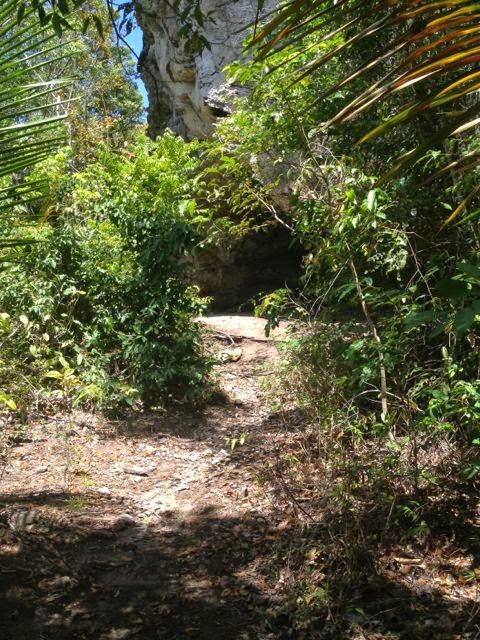Occasionally I have the opportunity to see a museum make real improvements in the storage of their collections. Recently, I had such an opportunity. I was asked to visit the Museum of Firefighting in Hudson, NY to examine an artifact. As part of the visit, I was invited to see their storage, and gladly accepted, as I am always interested in museum storage. So off we went.
I had in fact performed a CAP survey for this museum back in the summer of 2008, with the purpose of thoroughly examining the collection storage as well as prioritizing items for conservation. Back then, the museum's storage was actually scattered in several locations, with a real need for consolidation of artifacts, and expansion of the actual space allowed for storage. Some rooms were better organized than others.
Therefore, when I saw all that was done since my last visit I was very impressed with the effort of the staff over the years. Collections were now completely off the floor, shelving was covered with soft Tyvek dust covers, and collections were grouped by type.
This might seem like a simple effort, but often there are conflicting pulls on staff time, perhaps even staff changes, where such projects do not get accomplished. Even this one did not happen overnight, but has taken several years. It should be noted that the Museum did also receive an NEH Preservation Assistance Grant in order to purchase supplies.
I thought that I would show some before and after photographs of their great work.
 |
| Above, items in the collection are placed on open shelves. Below, everything is covered with Tyvek dust covers. |
 |
| Before photo (left) shows many items in cardboard boxes, most of which were stacked on the floor. The After photo (right) shows the switch to acid-free boxes and the ever-important dust-covers. |
 |
| The gift shop storage (seen on the Left) was moved from artifact storage, allowing for painting storage racks (Right). |
 |
| Awkward shelving was replaced with more standard metal shelving. |
A low-tech solution to hold the dust covers was done with large metal washers fastened with plastic rivets and 1" disc magnets. All sides of the metal shelves were covered with a layer of soft Tyvek. At the back and sides of the units, the Tyvek was secured around the perimeter with the washers and rivets. At the front of the units, the Tyvek was positioned as two overlapping parts. The sides were secured with the washer/rivets, but the top edge and center was secured with 1" ceramic disc magnets.
The metal washers were held in place with pushed-in, ribbed shank plastic rivets.
The pushed-in, ribbed shank, plastic rivet (illustrated above) can be
purchased from McMaster-Carr.
On the Left, the soft Tyvek is closed, covering the front of the shelf units.
On the Right, removing the ceramic magnets to view the artifacts behind.
On the Right, removing the ceramic magnets to view the artifacts behind.
 |
| Corroplast sheeting was secured with plastic tie wraps. |
For their storage needs, the Museum selected ceramic or ferrite magnets over a stronger rare earth option. In this situation, it was found that the rare earths were just too strong for the job. And in fact, they were correct, had they selected the stronger rare earth magnet, the sharp attraction or shock from "jumping" onto the metal shelving would, over time, demagnetize the magnet. For this specific type of use, the less expensive ceramic magnet with the low to medium pull force is the best choice.
At SAC we discuss storage often with our clients simply because storage is incredibly important. Over the next few posts we will be talking about some storage specifics and some storage generalizations to assist everyone involved in artifact storage to find the best solutions and avoid making costly mistakes. Stay tuned!
I cannot overstate the success of this Museum's storage overhaul. It was just wonderful to see that the artifacts in this museum are cared for in such a dedicated and thoughtful way. Great work to all who worked on this project!
Do you have a storage success story? Share it with us!
_____________________________
Gwen Spicer is a textile conservator in private practice. Spicer Art Conservation specializes in textile conservation, object conservation, and the conservation of works on paper. Gwen's innovative treatment and mounting of flags and textiles is unrivaled. To contact her, please visit her website.
Look for Gwen's book, "Magnetic Mounting for Art Conservators and Museums", available in 2018.
At SAC we discuss storage often with our clients simply because storage is incredibly important. Over the next few posts we will be talking about some storage specifics and some storage generalizations to assist everyone involved in artifact storage to find the best solutions and avoid making costly mistakes. Stay tuned!
I cannot overstate the success of this Museum's storage overhaul. It was just wonderful to see that the artifacts in this museum are cared for in such a dedicated and thoughtful way. Great work to all who worked on this project!
Do you have a storage success story? Share it with us!
_____________________________
Gwen Spicer is a textile conservator in private practice. Spicer Art Conservation specializes in textile conservation, object conservation, and the conservation of works on paper. Gwen's innovative treatment and mounting of flags and textiles is unrivaled. To contact her, please visit her website.
Look for Gwen's book, "Magnetic Mounting for Art Conservators and Museums", available in 2018.

























